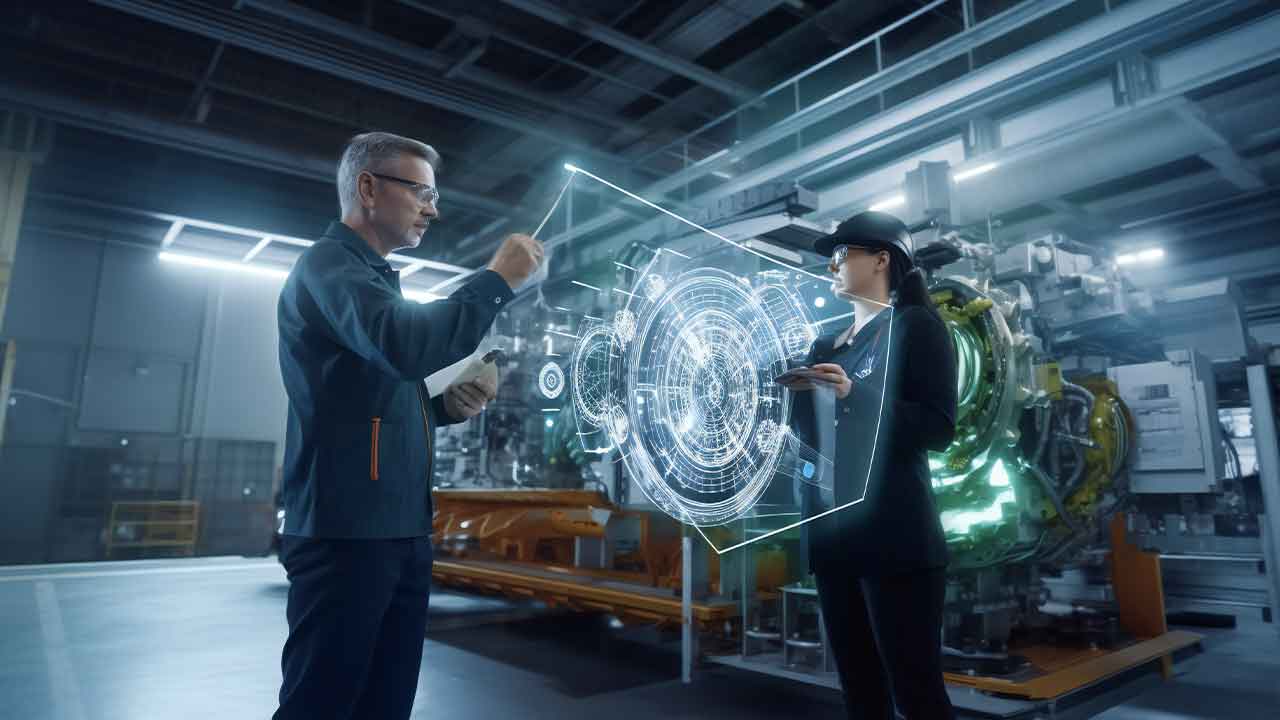Industrial Transformation Demands More Than Technology—It Requires a Strategic Shift
The manufacturing industry is at a pivotal inflection point. Amid growing complexity—geopolitical volatility, labor shortages, and a wave of technological disruption—many manufacturers are rethinking not just their systems, but their entire approach to transformation. What’s becoming increasingly clear is that technology alone isn’t enough. The companies that will thrive are those that can match innovation with adaptability, organizational alignment, and a willingness to rethink long-held assumptions.
From Vision to Value: The Pragmatic Path Forward
For many manufacturers, there’s a widening gap between long-term innovation goals and short-term operational demands. Closing this gap requires more than just ambition—it requires structure. One emerging best practice is to treat transformation like a journey: define a bold, emotionally compelling vision of the future, be honest about where the organization stands today, and design clear steps that generate value immediately and get closer to the vision.
Manufacturers should adopt a dual-focus mindset:
- Be bold in defining your destination—this gives teams purpose and direction.
- Be pragmatic in execution—this builds trust and momentum through early wins.
The first step doesn’t have to be massive, but it must be meaningful and measurable. Whether it’s a pilot initiative or a data integration project, small, successful moves lay the foundation for more complex transformation down the line.
Rethinking Data: From Static Assets to Shared Value
For years, manufacturers have been told that “data is the new oil” or “the new gold.” But in reality, most industrial data—scattered, siloed, and often lacking context—is far from ready to drive innovation. Especially when it comes to advanced applications like generative AI or predictive analytics, raw data isn’t enough.
The real transformation comes when data is:
- Accessible across teams and systems
- Contextualized for specific use cases
- Shared in collaborative environments
Protecting data behind internal firewalls might feel safe, but it limits its potential. In the new industrial paradigm, collaboration is the catalyst that turns data into value. Manufacturers must start thinking of data not as a proprietary asset to be locked away, but as an enabler to unlock shared progress—particularly when facing challenges no one can solve alone.
Why Organizational Transformation Must Precede Tech Adoption
Digital transformation is often treated as a technology problem, but the core challenge is usually organizational readiness. Many initiatives fail not because the tech doesn’t work, but because companies aren’t structured—or culturally prepared—to adopt it effectively.
There are three transformation levers that must move in sync:
- Mindset shift – embracing change, risk, and collaboration
- Organizational alignment – focussing teams and processes to support innovation
- Technology adoption – selecting technology that support long-term goals
Focusing on just one—typically technology—without preparing people or processes creates friction that stalls progress. Manufacturers must take a more holistic approach to transformation, where organizational design and culture evolve in parallel with the tech stack.
Openness as a Competitive Advantage
In today’s ecosystem-driven landscape, openness is no longer a nice-to-have—it’s a business imperative. From software integration to cross-industry partnerships, manufacturers that embrace interoperability and modularity gain flexibility, faster implementation, and access to broader innovation.
But openness is also a mindset. It requires companies to:
- Collaborate beyond internal teams
- Break down silos between IT, OT, and business units
- Engage with external partners and ecosystems without insisting on full control
This shift from proprietary thinking to platform thinking enables faster iteration, better user experiences, and a stronger collective ability to solve challenges that no one company can tackle alone.
The Most Important Step Is the First One
Manufacturers often wait for the “perfect moment” to start their transformation—after the next budget cycle, after hiring that one critical role, after one more technology matures. But in today’s climate, waiting is the riskiest move.
Success belongs to those who act with intention, even if the path ahead isn’t fully clear. That means being open to collaboration before knowing the exact ROI, investing in change before being forced to, and building adaptability into the core of the business.
Takeaway: Industrial transformation isn’t a tech rollout—it’s a strategic evolution. It requires clear vision, cross-functional collaboration, open ecosystems, and a bias for action. The companies that succeed won’t be the ones with the flashiest tools but the ones that can align mindset, organization, and technology toward a shared future—one step at a time.
This article is based on insights shared in a video interview with Mathias Oppelt, Head of Customer-Driven Innovation at Siemens Digital Industries.
If you’d like to hear more from Mathias, join us at IIoT World Manufacturing Day on May 17. He’ll speak on the panel “Generative AI in Manufacturing: From Design to Production Optimization.”
About the author
Lucian Fogoros is the Co-founder of IIoT World
Related articles:



